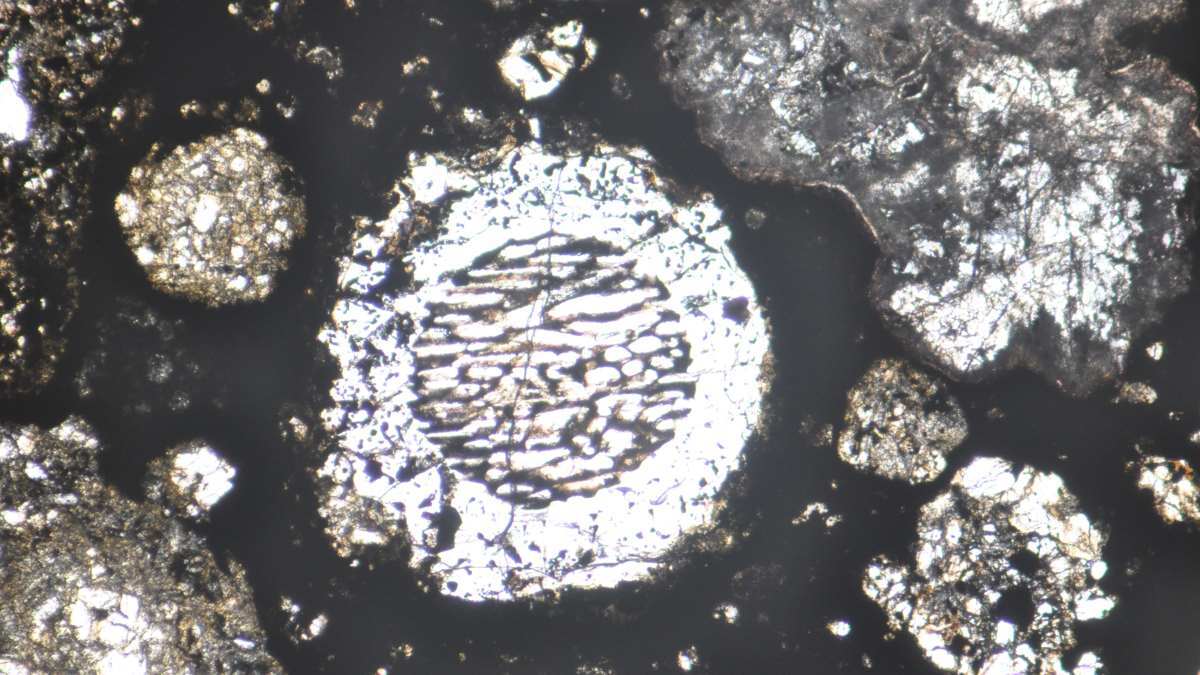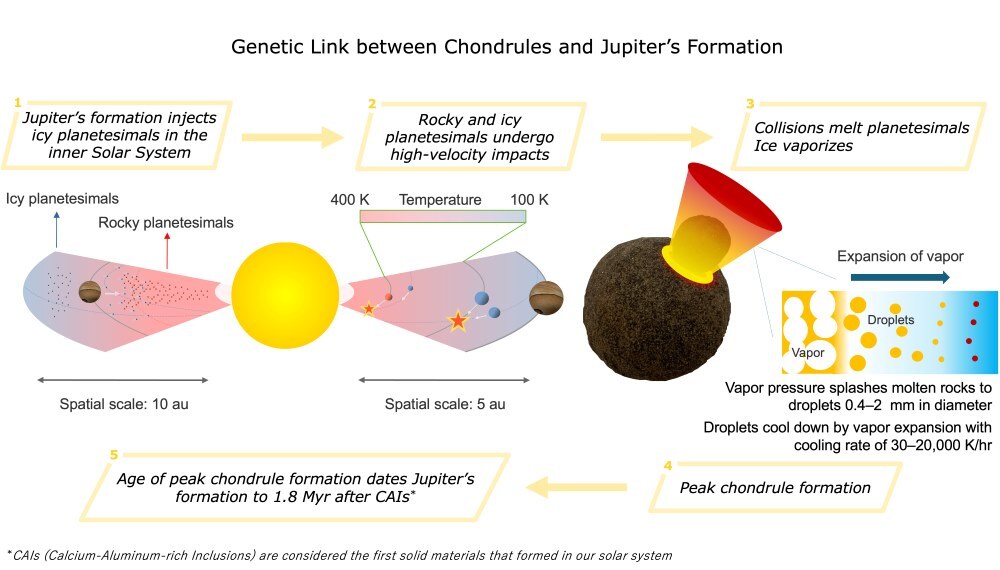27.08.2025
Researchers have for the first time determined the date and origin of ancient droplets from Jupiter found in meteorites.
The molten rock raindrops help astronomers trace the history of the giant gas planet’s creation and present a clearer picture of how the solar system formed.
Jupiter formed about 4.5 billion years ago. As the planet grew, its powerful gravitational pull caused nearby small icy and rocky bodies called planetesimals to crash into each other at super high speeds.

Round chondrules visible in a thin section of the Allende meteorite under microscopic view. Credit: Akira Miyake, Kyoto University.
The collision impacts were so forceful that the rock and dust found on these planetesimals melted on impact creating molten rock droplets 0.1–2 millimetres wide known as chondrules.
Some chondrules were incorporated into asteroids as the solar system continued to evolve. Over billions of years, these asteroids smashed down on Earth as meteorites.
Understanding how these small spheres came to Earth has been a mystery for scientists for decades.
“Previous formation theories couldn’t explain chondrule characteristics without requiring very specific conditions,” says Professor Sin-iti Sirono, the co-lead author from Nagoya University in Japan.
The collaboration of researchers from Nagoya University and INAF-Turin Astrophysical Observatory in Italy found that the characteristics of chondrules reveal information about the water contained in the planetesimals involved in their creation.
“[Our] model requires conditions that naturally occurred in the early solar system when Jupiter was born,” says Sirono.
“When planetesimals collided with each other, water instantly vaporised into expanding steam. This acted like tiny explosions and broke apart the molten silicate rock into the tiny droplets we see in meteorites today.”
The researchers developed a computer program to simulate the environment of Jupiter’s formation. The simulations tracked how Jupiter’s gravitational pull would have caused rocky and water-rich planetesimals to collide at high speeds.

“We compared the characteristics and abundance of simulated chondrules to meteorite data and found that the model spontaneously generated realistic chondrules,” says co-lead author Dr Diego Turrini from the INAF-Turin Astrophysical Observatory.
“The model also shows that chondrule production coincides with Jupiter’s intense accumulation of nebular gas to reach its massive size.”
Analysis of the chondrules that have fallen on Earth support this theory.
“Meteorite data tell us that peak chondrule formation took place 1.8 million years after the solar system began, this is also the time at which Jupiter was born,” says Turrini.
The study provides a clearer picture of how the solar system formed but doesn’t fully explain why chondrules of different ages are found in meteorites on Earth.
The researchers suggest the most likely explanation is that the formation of other gas giants like Saturn also triggered chondrule formation.
Studying chondrules can yield insights into how the solar system formed and may translate to other star systems.
The results from the computer simulation have been published in the journal Scientific Reports.
Quelle: COSMOS
